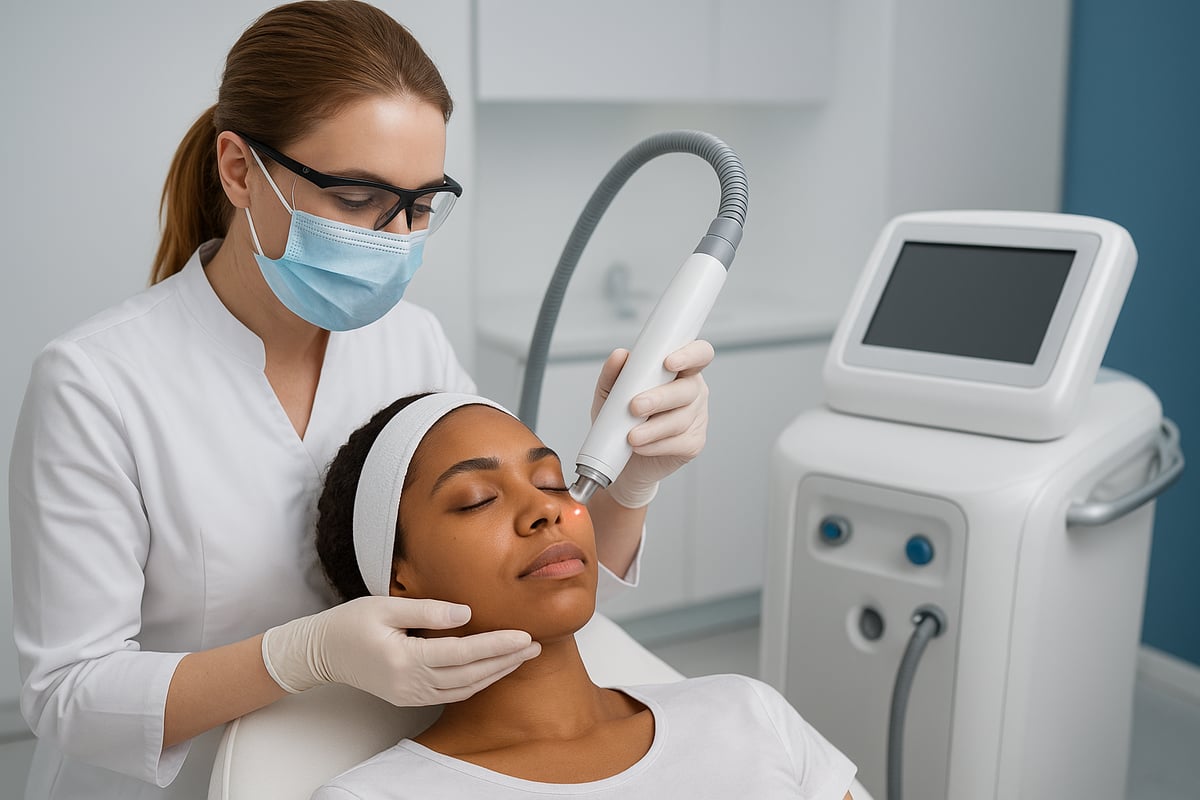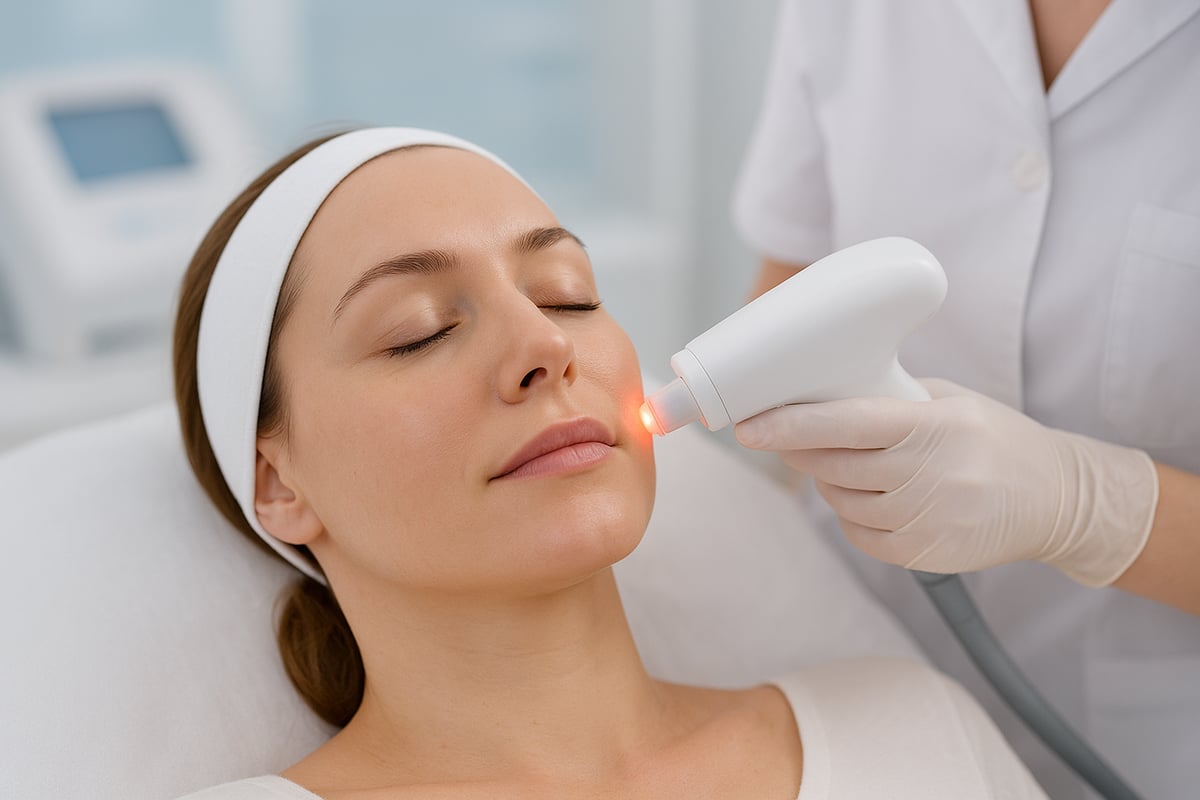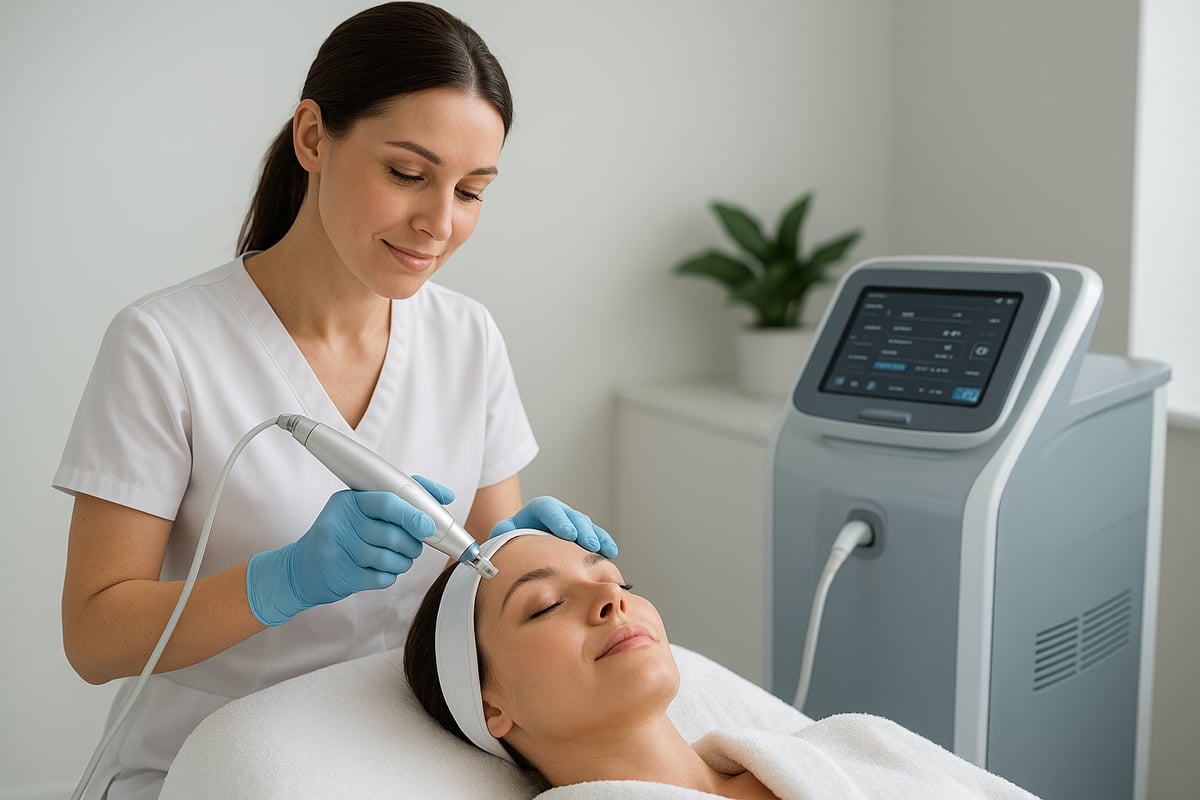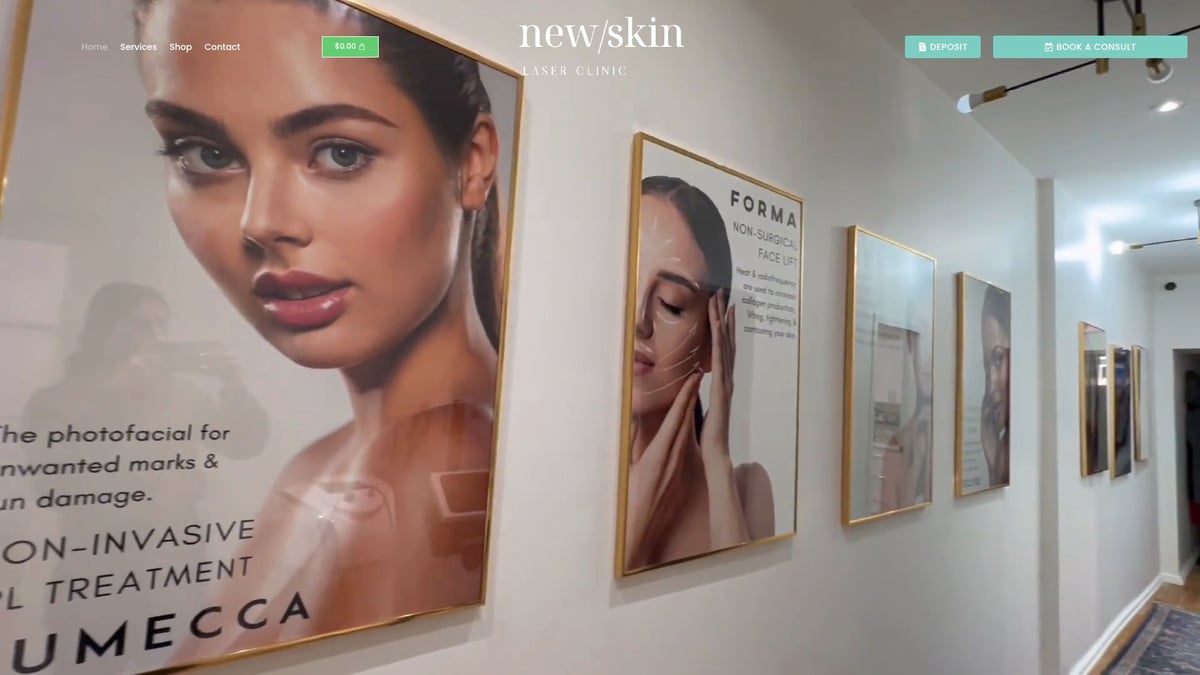Imagine waking up to smoother, clearer, and more youthful skin after only a handful of sessions, all without the need for invasive surgery. In 2025, laser treatment for face is transforming the world of skincare, offering innovations that deliver visible, long-lasting results with minimal downtime. This guide will walk you through everything you need to know, from the science behind the latest laser technologies to the step-by-step process, aftercare tips, and expert advice on choosing the right clinic. Unlock your best skin yet with practical insights and proven strategies for success.
Understanding Laser Treatment for Face: Fundamentals & Innovations
Curious about how laser treatment for face is transforming skincare? In this section, you’ll discover the essential facts, breakthrough innovations, and the science making facial laser procedures safer and more effective than ever.

What Is Laser Treatment for the Face?
Laser treatment for face refers to the use of focused light energy to address various skin concerns. This technology originated in dermatology decades ago, with early lasers primarily treating birthmarks and vascular lesions.
Today, laser treatment for face is renowned for targeting acne scars, fine lines, wrinkles, sun damage, and uneven pigmentation. The laser’s energy penetrates specific layers of the skin, triggering a controlled healing response. This process encourages cellular renewal and reveals a fresher, smoother complexion.
Laser energy interacts with the skin by gently removing damaged cells or stimulating deeper tissue, all while minimizing harm to surrounding areas. This precision is what makes modern laser procedures so effective and customizable.
Types of Laser Technologies in 2025
The landscape of laser treatment for face has drastically evolved. Two main categories exist: ablative lasers, which remove the outer skin layer for dramatic resurfacing, and non-ablative lasers, which target deeper tissues with less downtime.
In 2025, patients benefit from a diverse array of devices, such as:
- Fractional lasers: Deliver microbeams to treat tiny zones, speeding up recovery.
- Picosecond lasers: Use ultra-fast pulses for pigment and tattoo removal with less heat.
- Hybrid systems: Combine ablative and non-ablative benefits for tailored results.
Recent innovations have introduced AI-guided lasers that adjust settings in real time, as well as advanced cooling systems for enhanced comfort. Clinics now use only FDA-approved devices, ensuring safety and efficacy. For a deeper dive into these technologies and how they improve patient experience, see Innovations in Laser Technology 2025.
How Laser Treatments Work: The Science Explained
At the heart of laser treatment for face lies the science of selective photothermolysis—using specific wavelengths of light to target skin imperfections. The laser’s energy is absorbed by pigmented cells or water in the skin, breaking down unwanted spots or stimulating underlying tissue.
This process sparks collagen production and cellular regeneration, leading to firmer, more youthful skin. Modern systems allow practitioners to customize wavelengths and energy levels according to each person’s unique skin type, maximizing results and minimizing risks.
Who Is an Ideal Candidate?
Most adults seeking to improve skin texture, reduce pigmentation, or address scarring may benefit from laser treatment for face. Advances have made these treatments suitable for a wide range of skin types and tones.
Ideal candidates include individuals with realistic expectations, healthy skin, and no active infections. Age is less of a barrier, though younger skin may respond more quickly. Contraindications include certain medications, autoimmune diseases, or recent sun exposure, so a thorough consultation is essential.
Key Advancements in 2025
In 2025, laser treatment for face is more advanced than ever. Recent research highlights improved outcomes and reduced side effects, thanks to smarter energy delivery and AI-driven personalization.
Integration with other skincare technologies—such as digital skin analysis and combination therapies—ensures that every treatment is tailored for maximum safety and visible transformation. These developments make facial lasers a cornerstone of modern aesthetic medicine.
Benefits of Laser Facial Treatments
Laser treatment for face is celebrated for delivering transformative improvements in skin health and appearance. Patients frequently report smoother, clearer, and more youthful skin after just a few sessions. The benefits extend well beyond surface-level changes, impacting confidence and quality of life.

Visible Skin Improvements
One of the most compelling reasons to consider laser treatment for face is the dramatic reduction in fine lines and wrinkles. Clinical studies from 2024 and 2025 consistently demonstrate significant smoothing of skin texture and tightening after a series of treatments. Patients often notice minimized pore size and a more even complexion.
Many practitioners use advanced fractional and hybrid laser systems that target multiple skin layers. These technologies stimulate collagen production, supporting ongoing rejuvenation. For those seeking real-life results, Laser Skin Resurfacing Toronto features before-and-after photos that showcase the remarkable improvements possible with laser treatment for face.
Addressing Pigmentation & Scarring
Laser treatment for face is highly effective in treating hyperpigmentation, melasma, and stubborn sun spots. Recent innovations allow practitioners to precisely break down excess pigment in the skin, leading to a more uniform tone. Clinical data shows that up to 80% of patients experience visible improvement in pigmentation after a full treatment plan.
Acne scars, one of the most challenging skin concerns, respond especially well to fractional laser technologies. Before-and-after data from reputable clinics reveal significant smoothing of indented scars and a reduction in redness. The targeted approach of laser treatment for face ensures that both pigmentation and scarring can be addressed with precision and minimal disruption.
Long-Term Results & Prevention
What sets laser treatment for face apart is its ability to trigger ongoing collagen production. This not only improves current skin texture and firmness but also helps slow future signs of aging. Over time, patients benefit from a tighter, more resilient complexion.
Compared to traditional facials and chemical peels, the results are longer lasting and often more dramatic. Laser treatments reach deeper skin layers, promoting cellular renewal and helping prevent the recurrence of fine lines and laxity. This makes laser treatment for face a proactive choice for those seeking both correction and prevention.
Psychological & Social Benefits
The positive effects of laser treatment for face are not limited to physical changes. Surveys reveal that over 90% of patients feel more confident in their appearance after completing a treatment series. Patient testimonials consistently highlight improved self-esteem and a renewed willingness to engage socially.
Many individuals describe laser treatment for face as life changing, especially when it addresses long-standing skin concerns.
Safety Profile and Minimal Downtime
One of the main advantages of laser treatment for face is its strong safety profile. Side effect rates are notably lower compared to surgical or more invasive cosmetic procedures. Most patients experience only mild redness or swelling, which typically subsides within a few days.
Thanks to innovations in cooling and targeted delivery, downtime is minimal. Patients can return to daily activities soon after their session, making laser treatment for face a convenient option for modern lifestyles.
The Laser Treatment Process: Step-by-Step Guide
Embarking on a laser treatment for face journey involves a series of professionally guided steps. Each phase is essential for ensuring safety, comfort, and optimal results. Let’s walk through the process so you know what to expect at every stage.

Step 1: Consultation & Skin Assessment
The first step in any laser treatment for face is a comprehensive consultation. A licensed professional examines your skin's current condition, discusses your goals, and reviews your medical history. This ensures the treatment is safe and tailored to your needs.
In 2025, clinics utilize advanced digital skin analysis tools. These devices assess hydration, pigmentation, pore size, and elasticity with precision. The data gathered allows practitioners to create a personalized plan, increasing the likelihood of optimal outcomes.
A thorough consultation also identifies any contraindications, such as medications or medical conditions, that might affect your eligibility for laser treatment for face. By understanding your unique skin profile, the provider can recommend the most effective laser technology for you.
Step 2: Preparing for Your Session
Proper preparation is crucial before starting a laser treatment for face. Your provider will give you specific guidelines to ensure your skin is ready and protected.
Common pre-treatment steps include:
- Avoiding sun exposure and tanning beds for at least two weeks
- Discontinuing retinoids, exfoliants, or harsh skincare products several days prior
- Stopping certain medications that increase photosensitivity, if advised
- Keeping the skin clean and free from makeup on the day of treatment
Adhering to these instructions helps minimize risks and enhances the effectiveness of your laser treatment for face. Your clinic may also recommend a gentle cleanser or moisturizer to use in the days leading up to your appointment.
Step 3: The Laser Procedure
On the day of your laser treatment for face, you’ll be guided through the process by your practitioner. After cleansing your skin, a topical numbing cream may be applied for comfort. Many clinics now use cooling devices to further reduce discomfort.
The practitioner will select the appropriate device and settings based on your skin type and concerns. Leading technologies such as the Candela GentleMax Pro Laser are often chosen for their precision and safety.
During the procedure, you may feel a mild tingling or warmth as the laser pulses are delivered. Sessions typically last 30 to 60 minutes, depending on the area treated. Thanks to modern advancements, most patients find the process tolerable and efficient.
Step 4: Immediate Post-Treatment Care
Following your laser treatment for face, it’s normal to experience redness and slight swelling. These effects are temporary and usually resolve within a few hours to a couple of days.
Your provider will apply a soothing serum or cool compress to calm the skin. It’s important to avoid touching or picking at the treated area. You’ll receive specific aftercare instructions, which may include using a gentle moisturizer and avoiding makeup for 24 hours.
Sticking to these recommendations helps speed up recovery and reduces the risk of complications. Always follow your clinic’s guidance closely after a laser treatment for face.
Step 5: Aftercare & Healing
Proper aftercare is vital for maximizing the benefits of your laser treatment for face. Sun protection is non-negotiable, as your skin will be more sensitive to UV rays. Use a broad-spectrum sunscreen daily and avoid direct sun exposure.
Your provider may recommend specific skincare products, such as fragrance-free moisturizers and serums with calming ingredients. Monitor your skin for signs of normal healing, like mild flaking or dryness.
If you notice unusual symptoms, such as intense pain or prolonged redness, contact your clinic promptly. Following aftercare protocols ensures a smooth recovery and the best possible results from your laser treatment for face.
Step 6: Follow-Up and Maintenance
To achieve and maintain optimal results from laser treatment for face, follow-up sessions are often necessary. Most treatment plans include a series of appointments spaced several weeks apart.
Your provider will advise on the ideal frequency based on your skin’s response and desired outcome. Periodic touch-ups may be recommended to preserve the rejuvenating effects.
Consistent maintenance, combined with a healthy skincare routine, ensures your investment in laser treatment for face delivers lasting improvements. Regular check-ins with your clinic help track progress and adjust your plan as needed.
Risks, Side Effects, and How to Minimize Them
Considering laser treatment for face? Understanding the risks and side effects is crucial for a safe, satisfying experience. Let’s break down what you need to know, how to minimize potential issues, and the latest advancements making treatments safer for everyone.
Common Side Effects and Their Duration
Most people experience mild, temporary side effects after laser treatment for face. These usually include redness, swelling, and a sensation similar to a mild sunburn. The intensity varies by individual and the type of laser used.
Typical recovery times range from a few hours to several days. For non-ablative lasers, redness may resolve within 24–48 hours. Ablative treatments can result in peeling or flaking for up to a week.
Side Effects Table
| Side Effect | Typical Duration | Severity |
|---|---|---|
| Redness | 1–3 days | Mild–Moderate |
| Swelling | 1–2 days | Mild |
| Peeling/Flaking | 3–7 days (ablative) | Moderate |
With proper aftercare, most side effects of laser treatment for face are short-lived and manageable.
Potential Risks and Complications
While laser treatment for face is generally safe, there are some rare complications. These include hyperpigmentation (darkening of the skin), hypopigmentation (lightening), scarring, or infection. The risk increases with improper technique or unsuitable devices.
Infections are uncommon, especially when clinics follow strict hygiene protocols. Scarring is rare but can occur if aftercare instructions are not followed or if the skin is picked at during healing.
Discuss any history of skin disorders or sensitivities with your provider before starting laser treatment for face. This helps identify and manage potential risks early.
Minimizing Risks: Best Practices
To reduce the risk of complications from laser treatment for face, always choose a certified, experienced practitioner. Look for clinics using FDA-approved devices and up-to-date technology.
Follow all pre-treatment and post-treatment guidelines. These may include avoiding sun exposure, discontinuing certain medications, and using recommended skincare products. Proper preparation and aftercare greatly decrease the likelihood of adverse effects from laser treatment for face.
A personalized consultation ensures your treatment plan matches your skin type, concerns, and medical history.
Laser Treatments for Darker Skin Tones
Historically, laser treatment for face posed challenges for darker skin tones due to higher risk of pigmentation changes. However, recent innovations have made these procedures safer and more effective for Fitzpatrick IV–VI skin types.
Modern devices offer adjustable wavelengths and advanced cooling systems, reducing the risk of burns or discoloration. For more on these innovations and trending facial laser treatments, see Facial Laser Treatment Trends 2025.
If you have a deeper complexion, ensure your provider uses lasers specifically designed for your skin tone and conducts a patch test before full treatment.
Addressing Myths and Misconceptions
Many myths surround laser treatment for face, such as the belief that it is always painful or unsafe for certain skin types. In reality, discomfort is typically minimal, and technology now allows safe use across a wide range of tones.
Consulting with a qualified professional dispels misinformation and ensures you receive accurate, up-to-date advice about laser treatment for face.
Choosing the Right Clinic and Practitioner
Selecting the right clinic and practitioner is crucial for achieving optimal results with laser treatment for face. The expertise of your provider, the technology they use, and the transparency of their practice all play key roles in your safety and satisfaction.
Qualifications and Experience to Look For
When considering laser treatment for face, always verify the credentials of your provider. Board-certified dermatologists possess extensive training in skin health and laser technology. In contrast, estheticians may have limited experience with advanced devices.
Look for practitioners who regularly update their training and are certified in the latest laser systems. Clinics should display credentials and certifications prominently. Ask about the provider’s experience with your specific skin concern and skin type.
A reputable clinic will also discuss potential risks and benefits candidly, setting realistic expectations for your laser treatment for face.
Technology and Equipment Standards
The quality and safety of your results depend heavily on the technology used. Choose clinics equipped with modern, FDA-approved devices tailored for laser treatment for face. Up-to-date laser platforms offer improved precision, customizable settings, and enhanced safety features.
Ask if the clinic uses innovations such as AI-guided lasers or advanced cooling systems. These technologies can further personalize your treatment and reduce discomfort. For more on how artificial intelligence is shaping laser procedures, explore AI and Machine Learning in Laser Treatments.
Ensure the clinic follows strict hygiene protocols, routinely maintains their equipment, and adheres to all local safety regulations.
Personalized Consultations and Treatment Plans
A thorough consultation is the foundation of a successful laser treatment for face. Your provider should assess your skin type, tone, and medical history before recommending any procedure. Digital imaging and analysis tools now allow for more precise evaluations and tailored treatment plans.
During your consultation, expect a discussion on your goals, any previous treatments, and your daily skincare routine. The practitioner should explain the steps of the procedure and answer all your questions.
A personalized plan ensures your laser treatment for face is both safe and effective, maximizing results while minimizing risk.
Pricing, Packages, and Transparency
Transparent pricing is a hallmark of a trustworthy clinic. Ask for a detailed breakdown of costs for your laser treatment for face, including consultation fees, treatment sessions, aftercare products, and any follow-up visits.
Many clinics offer packages for multiple sessions, which can provide better value. Ensure you understand what each package includes and if there are any hidden fees.
A written quote and clear communication about payment policies help build trust and prevent misunderstandings throughout your laser treatment for face journey.
Patient Reviews and Real Results
Before committing to a laser treatment for face, review patient testimonials and before/after photos. Look for genuine feedback on independent platforms, not just the clinic’s website.
Authentic reviews provide insight into the patient experience, satisfaction with results, and the professionalism of the clinic team. Pay attention to reviews from patients with similar skin types or concerns.
Third-party case studies and photographic evidence can help set realistic expectations for your own laser treatment for face.
New Skin Laser Clinic: Toronto’s Trusted Laser Experts
New Skin Laser Clinic in Toronto stands out for its advanced technology and patient-centered approach. Their expert team of board-certified dermatologists and experienced practitioners create customized plans for every client.

The clinic uses cutting-edge FDA-approved lasers, offering a wide range of facial treatments. Their commitment to safety, transparency, and ongoing education ensures clients receive the highest standard of care for laser treatment for face.
Frequently Asked Questions About Laser Facial Treatments
Patients considering laser treatment for face often have similar questions about the procedure, safety, and results. Below, we address the most common queries to help you make informed decisions and set realistic expectations.
Does Laser Treatment Hurt?
One of the most common concerns about laser treatment for face is the level of discomfort. Most modern facial lasers are designed with patient comfort in mind. Non-ablative lasers typically cause minimal pain, often described as a light snapping or warm sensation. Ablative lasers can be more intense, but numbing creams and cooling devices are used to make the experience tolerable.
Pain thresholds vary. Some people report only mild tingling, while others may feel slight discomfort during the session. Advanced cooling technologies in 2025 further reduce the sensation, making the process smoother than ever. If you are worried about pain, discuss anesthetic options with your provider before your laser treatment for face.
How Many Sessions Are Needed?
The number of sessions required for laser treatment for face depends on your skin goals and the type of concern being addressed. For mild pigmentation or texture improvement, two to four treatments may suffice. More severe acne scarring or deeper wrinkles might need five or more sessions spaced several weeks apart.
Your provider will recommend a personalized treatment plan following a thorough assessment. Factors like skin type, concern severity, and the specific laser technology influence your session count. Remember, consistent care and adherence to recommendations will maximize your laser treatment for face results.
What Results Can I Expect and How Soon?
Most patients see noticeable improvements within a week or two after their first laser treatment for face. Immediate effects include smoother texture, reduced redness, and a subtle glow. Over the next few months, as collagen production increases, you will observe firmer, more even skin.
Long-term results depend on the laser type and your skin’s natural healing response. For optimal outcomes, follow all aftercare instructions provided by your clinic. The longevity of your laser treatment for face results also benefits from sun protection and a tailored skincare routine.
Can Laser Treatments Be Combined With Other Procedures?
Yes, laser treatment for face can safely be paired with other non-invasive cosmetic procedures for enhanced outcomes. Common combinations include microneedling, chemical peels, and radiofrequency therapies. These approaches can address multiple skin concerns simultaneously, such as texture, tone, and elasticity.
Providers often recommend spacing treatments to allow skin recovery between procedures. Always consult a qualified practitioner to ensure your combination plan is safe and effective. In some cases, combining treatments can reduce overall downtime and amplify the benefits of your laser treatment for face.
Is Laser Treatment Safe for All Skin Types?
Advancements in laser technology have made laser treatment for face accessible to a wide range of skin tones and types. Modern devices offer customizable settings and wavelengths, allowing providers to tailor treatments for individual needs. Before starting, patch testing and thorough evaluations are performed to minimize risks.
If you have a darker skin tone or a history of sensitivity, discuss your concerns during your consultation. Choosing a clinic experienced in treating diverse skin types ensures your laser treatment for face is both safe and effective.
What Are the Alternatives to Laser Facial Treatments?
For those exploring options beyond laser treatment for face, several non-laser procedures are available. Microneedling is a popular choice for stimulating collagen with minimal downtime. You can learn more about its benefits by visiting Eclipse Microneedling for Skin. Chemical peels are another effective alternative, offering exfoliation and pigment correction for various skin types. For a detailed comparison, see Chemical Peel Alternatives.
Here is a quick comparison:
| Treatment | Best For | Downtime |
|---|---|---|
| Laser | Scarring, pigmentation, aging | Low to medium |
| Microneedling | Texture, fine lines | Low |
| Chemical Peel | Pigmentation, dullness | Low to medium |
Discuss your goals with a skin professional to determine whether laser treatment for face or an alternative is best for you.

